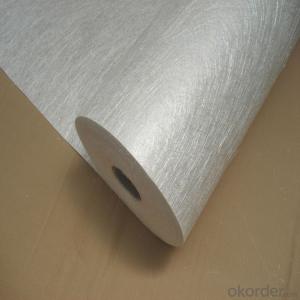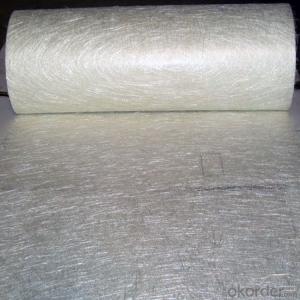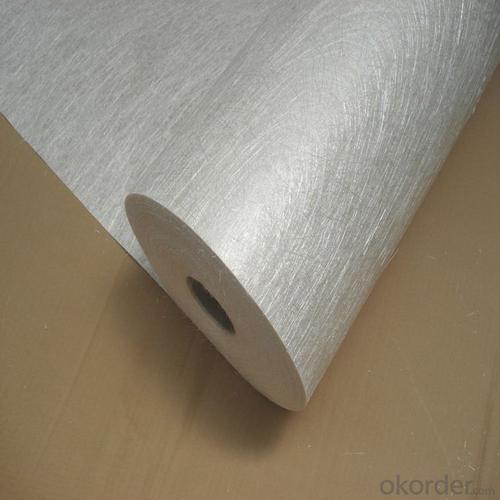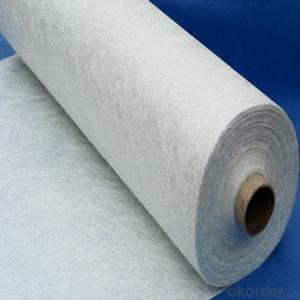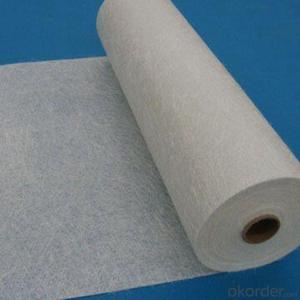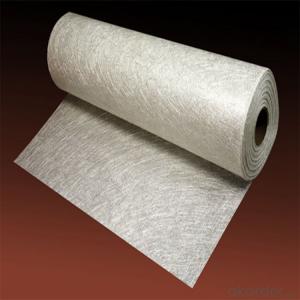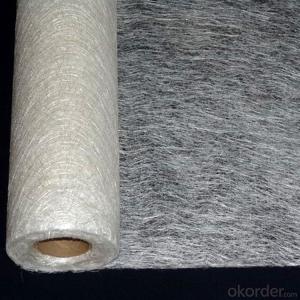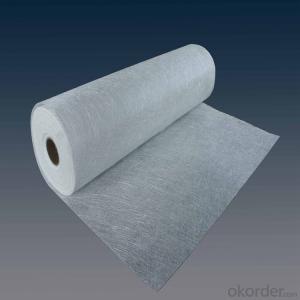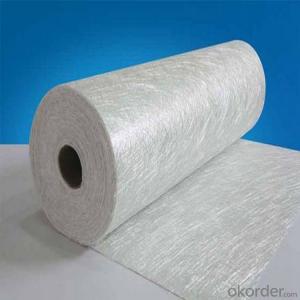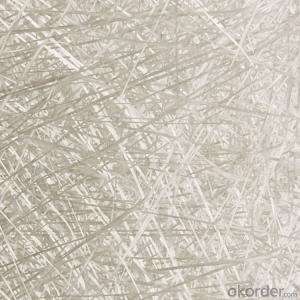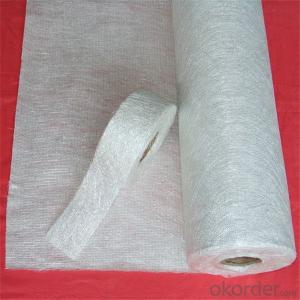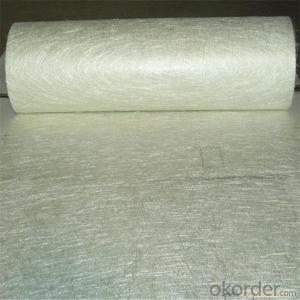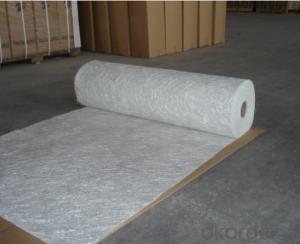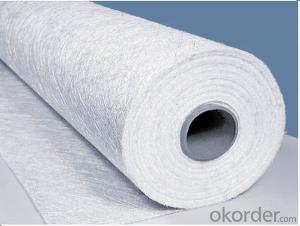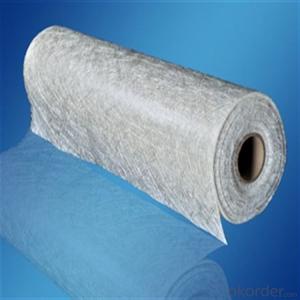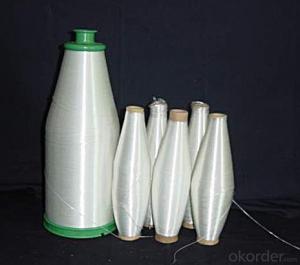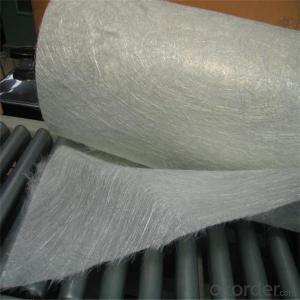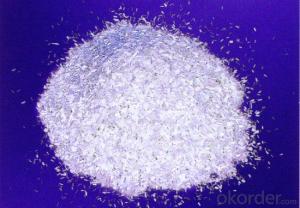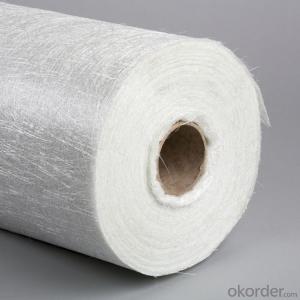Powder Fiberglass Chopped Strand Mat
- Loading Port:
- China main port
- Payment Terms:
- TT OR LC
- Min Order Qty:
- 1 kg
- Supply Capability:
- 5000 kg/month
OKorder Service Pledge
OKorder Financial Service
You Might Also Like
Product Description:
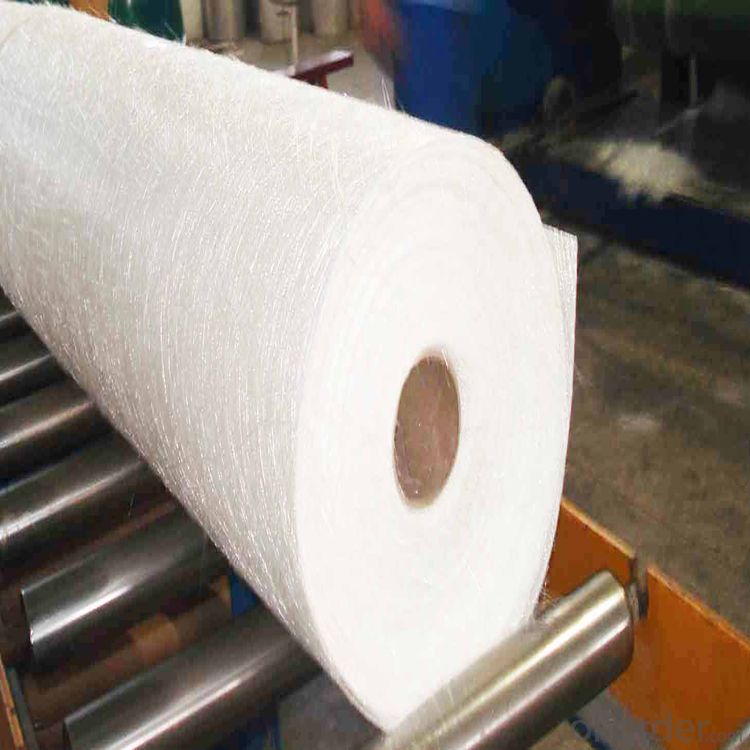
Surfacing Tissue mainly used in the surface layers of FRP products. It features even Fiber distribution, soft feel, level and smooth fiber surface, less glue content, quick resin soak and good pattern fitness. It can improve the product surface property on corrosion resistance, compressive strength, seepage resistance, and longer service life. It is also suitable for spraying; pattern pressing and other FRP pattern technology.
Surfacing Tissue mainly used in the surface layers of FRP products. It features even Fiber distribution, soft feel, level and smooth fiber surface, less glue content, quick resin soak and good pattern fitness. It can improve the product surface property on corrosion resistance, compressive strength, seepage resistance, and longer service life. It is also suitable for spraying; pattern pressing and other FRP pattern technology.
Product Features:
Fast breakdown in styrene
Fiber dispersed evenly
Low binder content
Superior acid corrosion resistance
Specifications:
Item | Over Density | Moisture Content | Chop Density | Polyester Yarn | Width |
(g/m2) | (%) | (g/m2) | (g/m2) | (mm) | |
EMK300 | 309.5 | ≤0.15 | 300 | 9.5 | 50-3300 |
EMK380 | 399 | 380 | 19 | ||
EMK450 | 459.5 | 450 | 9.5 | ||
EMK450 | 469 | 450 | 19 | ||
EMC0020 | 620.9 | 601.9 | 19 | ||
EMC0030 | 909.5 | 900 | 9.5 |
Product Packaging:
Each Surface Tissue is wound onto a paper tube which has an inside diameter of 76mm and the mat roll has a diameter of 330mm. The mat roll is wrapped up with plastic film,and then packed in a cardboard box or wrapped up with kraft paper. The rolls can be vertically or horizontally placed. For transportation, the rolls can be loaded into a cantainer directly or on pallets.

Product Storage:
Unless otherwise specified, Chopped Strand Mat should be stored in a dry, cool and rain-proof area. It is recommended that the room temperature and humidity should be always maintained at 15℃~35℃ and 50%~75% respectively.
Company Information
CNBM (China National Building Material) Group is the largest comprehensive building materials group in China that in integrate scientific research, manufacturing and logistics into one entity. The largest building materials and equipment specialists in China. Upon State Council approval, today CNBM owned more than 300 subordinate manufacturing factories and servicing companies. There are 6 fully owned public listed companies and 11 partially owned with substantial shares public listed companies. In many of these fields, CNBM is playing the leading role in the building industry in the country.
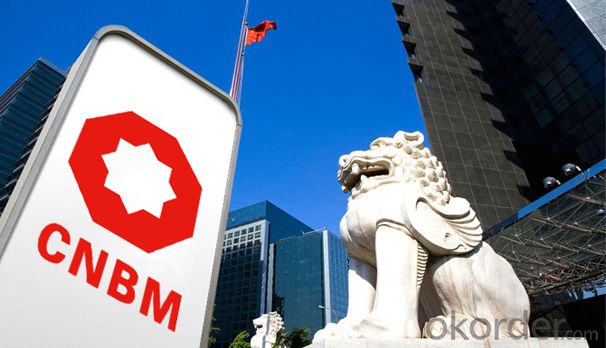
- Q: What are the typical moisture resistance properties of chopped strand composites?
- Chopped strand composites typically have good moisture resistance properties. The chopped strand reinforcement, usually made of glass or carbon fibers, is inherently resistant to moisture absorption. This resistance is further enhanced by the matrix material, which can be a thermoset resin like epoxy or a thermoplastic resin like polypropylene. The matrix material in chopped strand composites acts as a barrier, preventing water molecules from reaching the fibers. This barrier effect is especially pronounced in thermoset resins, which cure into a rigid and impermeable structure. Thermoplastic resins also provide moisture resistance, although to a slightly lesser extent due to their semi-crystalline nature. The moisture resistance properties of chopped strand composites make them suitable for various applications in wet or humid environments. For example, they are commonly used in marine applications, such as boat hulls and decks, where exposure to water is constant. They are also used in automotive components, aerospace structures, and infrastructure applications where moisture resistance is critical for long-term durability. However, it is important to note that while chopped strand composites have good moisture resistance, they are not completely impervious to water. Prolonged exposure to moisture or immersion in water can eventually lead to some degree of water absorption. Therefore, proper design considerations, such as the use of appropriate surface coatings or moisture barriers, should be taken into account to maximize the moisture resistance properties of chopped strand composites.
- Q: What is the typical length of fiberglass chopped strand?
- The typical length of fiberglass chopped strand can vary depending on the specific application or industry it is being used in. However, the most commonly used lengths range from 1/8 inch (3 mm) to 1 inch (25 mm).
- Q: Is fiberglass chopped strand suitable for marine structural applications?
- Yes, fiberglass chopped strand is suitable for marine structural applications. It is a durable and corrosion-resistant material that can withstand the harsh marine environment, making it ideal for use in boat hulls, decks, and other structural components. Its high strength-to-weight ratio and excellent impact resistance also make it a popular choice in the marine industry.
- Q: What material is made of glass fiber pipe?
- Glass fiber cloth and resin
- Q: How is the surface roughness of fiberglass chopped strand measured?
- The surface roughness of fiberglass chopped strand is typically measured using a profilometer. A profilometer is a device that measures the height variations of a surface by running a stylus or a laser probe over it. The stylus or laser probe moves across the surface in a controlled manner and records the vertical displacement of the surface at multiple points along the path. The data collected is then used to generate a profile of the surface roughness. In the case of fiberglass chopped strand, the profilometer is used to measure the roughness of the individual glass fibers. The chopped strand is placed on a flat surface, and the stylus or laser probe is moved over the fibers to measure their height variations. The measurements are typically taken at multiple points along the length of the fibers to get an accurate representation of the surface roughness. The surface roughness of fiberglass chopped strand is often expressed in terms of Ra, which is the arithmetic average of the absolute values of the measured surface height deviations. Ra provides a quantitative measure of the roughness of the surface and is commonly used in the industry to compare different materials or manufacturing processes. By measuring the surface roughness of fiberglass chopped strand, manufacturers can ensure that the quality of their product meets the required standards. It also helps to determine the suitability of the fiberglass for specific applications where surface roughness may be a critical factor, such as in composite materials or reinforcement in various industries.
- Q: How does the strength of fiberglass chopped strand compare to other reinforcement materials?
- The strength of fiberglass chopped strand is comparable to other reinforcement materials used in various industries. Fiberglass chopped strand is known for its high tensile strength, which refers to its ability to resist being pulled apart. It is particularly strong when used in composite materials, as it adds structural integrity and enhances the overall strength of the finished product. Compared to other reinforcement materials such as carbon fiber or aramid (Kevlar), fiberglass chopped strand may have slightly lower strength. However, it is important to note that the choice of reinforcement material depends on the specific application and desired properties. One advantage of fiberglass chopped strand is its cost-effectiveness. It is generally more affordable than carbon fiber or aramid, making it a popular choice for applications where high strength is required but cost is a consideration. Additionally, fiberglass chopped strand is known for its corrosion resistance, electrical insulation properties, and thermal stability. These characteristics make it suitable for a wide range of applications, including automotive components, construction materials, marine industry, aerospace, and sports equipment. In conclusion, while the strength of fiberglass chopped strand may be slightly lower compared to certain reinforcement materials, its cost-effectiveness, corrosion resistance, and other desirable properties make it a reliable and widely-used option in various industries.
- Q: How does the fiber-matrix adhesion distribution of fiberglass chopped strand affect the properties of composites?
- The fiber-matrix adhesion distribution of fiberglass chopped strand plays a crucial role in determining the properties of composites. Fiberglass chopped strand composites are made up of individual glass fibers embedded in a matrix material, such as a polymer resin. The adhesion between the fibers and the matrix is essential for transferring load and stress between the two components. The distribution of fiber-matrix adhesion throughout the composite affects several properties of the material. Firstly, it influences the strength and stiffness of the composite. A higher degree of adhesion between the fibers and the matrix results in better load transfer, leading to increased strength and stiffness. On the other hand, poor adhesion can lead to weak bonding between the fibers and the matrix, reducing the overall strength and stiffness of the composite. Additionally, the fiber-matrix adhesion distribution affects the durability and fatigue resistance of composites. A homogeneous and strong adhesion distribution ensures that the load is evenly distributed across the fibers, reducing the possibility of fiber debonding or delamination. This enhances the durability and fatigue resistance of the composite, making it more resistant to cracking, deformation, and failure under cyclic loading conditions. Moreover, the adhesion distribution affects the thermal and chemical resistance of composites. A uniform and strong adhesion between the fibers and the matrix helps in efficient stress transfer, which reduces the risk of localized heating and thermal degradation. Similarly, a good adhesion distribution prevents the penetration of chemicals into the composite, safeguarding it against chemical degradation. In summary, the fiber-matrix adhesion distribution is a critical factor that influences the mechanical, durability, thermal, and chemical properties of fiberglass chopped strand composites. A strong and uniform adhesion distribution enhances the strength, stiffness, durability, fatigue resistance, thermal resistance, and chemical resistance of the composites, making them more suitable for various applications in industries such as automotive, aerospace, construction, and marine.
- Q: How does the water absorption of the chopped strand affect its performance?
- The water absorption of chopped strand can significantly impact its performance. When fibers absorb water, they can become weakened and lose their structural integrity. This can lead to reduced mechanical properties and overall performance of the chopped strand, such as lower tensile strength and stiffness. Additionally, water absorption can also increase the weight of the material, potentially affecting its handling and processing characteristics. Therefore, minimizing water absorption is crucial to maintain the desired performance of chopped strand.
- Q: Is fiberglass chopped strand suitable for applications requiring fire resistance?
- No, fiberglass chopped strand is not suitable for applications requiring fire resistance. While fiberglass itself is a fire-resistant material, chopped strand refers to short, random lengths of fiberglass strands that are typically used as reinforcements in composite materials. Chopped strand does not possess the same level of fire resistance as other fiberglass products, such as woven fabrics or mats that are specifically designed for fire-resistant applications. Therefore, if fire resistance is a requirement for a particular application, it is advisable to explore alternative materials or fiberglass products that are specifically engineered to meet such requirements.
- Q: How does fiberglass chopped strand affect the strength of composite materials?
- Fiberglass chopped strand plays a crucial role in enhancing the strength of composite materials. When added to a composite matrix, the chopped strand reinforces the material, increasing its overall strength and stiffness. The fibers in fiberglass chopped strand act as a reinforcement, providing mechanical support and improving the material's resistance to external forces or stresses. The fibers in chopped strand are typically made of glass, which has high tensile strength and stiffness. When embedded in a composite matrix, these fibers distribute stress more evenly throughout the material, preventing the propagation of cracks and enhancing its load-bearing capacity. Additionally, the high aspect ratio of the chopped strand fibers promotes efficient stress transfer from the matrix to the reinforcement, further improving the material's strength. The orientation and distribution of the chopped strand fibers also play a significant role in determining the strength of the composite material. By adjusting the fiber alignment and dispersion, manufacturers can tailor the material to meet specific mechanical requirements. For instance, aligning the fibers in a unidirectional manner can significantly increase the material's strength along a particular direction, making it suitable for applications requiring high tensile or flexural strength. In summary, fiberglass chopped strand greatly influences the strength of composite materials. By reinforcing the composite matrix, the chopped strand fibers enhance the material's overall strength, stiffness, and load-bearing capacity. The properties of fiberglass chopped strand, including its high tensile strength, stiffness, and aspect ratio, contribute to the improved mechanical performance of composite materials.
Send your message to us
Powder Fiberglass Chopped Strand Mat
- Loading Port:
- China main port
- Payment Terms:
- TT OR LC
- Min Order Qty:
- 1 kg
- Supply Capability:
- 5000 kg/month
OKorder Service Pledge
OKorder Financial Service
Similar products
Hot products
Hot Searches
Related keywords
